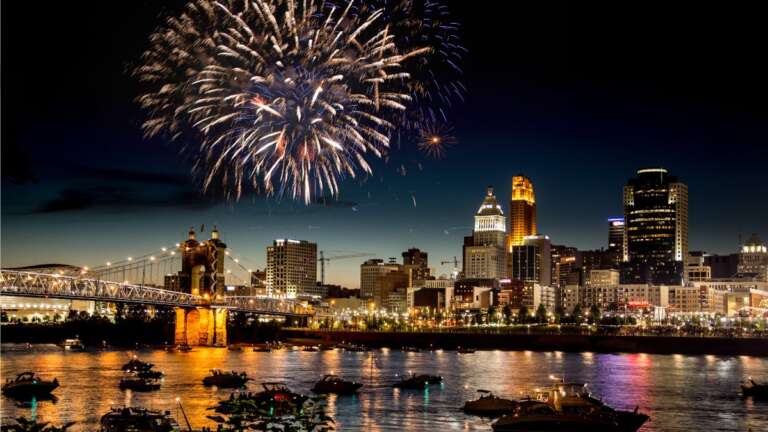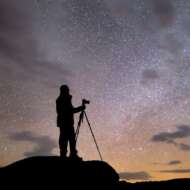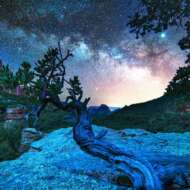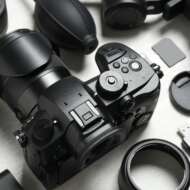Why is it that fireworks always look incredible in person, but when you try to capture them on camera, they tend to look lackluster?
The vibrant colors and explosive patterns often get lost in blurry or poorly timed shots.
Capturing the magic of fireworks can be tricky, but with a few tips and the right equipment, you can transform those fleeting bursts of light into stunning photographs. This guide will teach you how to photograph fireworks like a pro, ensuring your photos reflect the awe and excitement of the real thing.
Equipment Needed for Fireworks Photography
Capturing the dazzling display of fireworks requires the right equipment to ensure your photos are sharp, vibrant, and well-composed. Here’s a list of essential gear to get you started:
- DSLR or Mirrorless Camera: These cameras offer the manual settings needed for long exposures and precise adjustments.
- The Right Lens: A versatile medium zoom lens should be all you need. Some might prefer a wide angle les, ideal for capturing expansive sky views and the full burst of fireworks.
- Tripod: Essential for stabilizing your camera during long exposures, preventing any blur from camera shake.
- Remote Shutter Release: Allows you to trigger the shutter without touching the camera, maintaining stability.
- Extra Batteries: Long exposure shots can drain batteries quickly, so spares are crucial.
Can I Use My Phone Camera?
A DSLR or mirrorless camera is ideal for capturing the best firework shots. They offer full manual control over camera settings, have larger sensors resulting in higher quality images, handle long exposures better, and allow for lens changes if needed.
However – Yes! You can still take impressive fireworks photos with a phone camera.
Even if you are using your phone camera, it is still recommended to shoot in manual mode using a tripod, in addition to the other tips below.
Top 6 Tips for Photographing Fireworks
1. Scout the Location Early
Finding the perfect spot is crucial for capturing stunning firework photos. Arrive at the location well before the show begins to secure a spot with a clear view of the sky. Look for interesting foreground elements such as buildings, skylines, trees, monuments, or water bodies to help frame your shots and add scale and depth to the image.
It’s also fine to just focus on firework bursts in the sky without any foreground elements. This can make for interesting abstract firework photography.
2. Use Manual Settings
Using manual settings on your camera gives you full control over your photos. If you’re new to photography, using your camera’s manual settings might seem intimidating at first, but it’s essential for capturing those mesmerizing fireworks photos.
Don’t worry—it’s not as hard as it sounds. With a bit of practice and experimentation, you’ll quickly get the hang of it.
Generally, for photographing fireworks, you want to shoot with manual exposure using a low ISO, a narrow aperature, and slow shutter speed. Make sure the flash is turned off!
To start, try these recommended fireworks photography settings and adjust as needed to get the results you’re after.
- ISO 100
- f/11 aperature
- 3 second shutter speed
Your choice of shutter speed has the most affect on the appearance of your photos and the balance of your other settings. For fireworks you can use shutter speeds ranging from 1/2 second up to 30 seconds (or even more). Experiment with your settings to find the results you like best.

3. Try Using Bulb Mode
Bulb mode allows you to control the shutter speed manually, holding it open for as long as you want. This is particularly useful for photographing multiple bursts in a single frame. Keep the shutter open for several seconds, or even minutes, to capture a series of fireworks and create a layered, dynamic image.
4. Use a Remote Trigger
Using a remote trigger is a game-changer when photographing fireworks. It allows you to activate the shutter without physically touching the camera, preventing any unwanted camera shake that could blur your long-exposure shots. This is especially important for capturing the crisp, vibrant trails and bursts of fireworks. It also allows you to sit back and enjoy the show while you snap away!
5. Get Your Timing Down
Start by observing the rhythm and patterns of the firework display, noting how long it takes from launch to burst. Use these observations to anticipate and time your shots. Practice triggering the shutter at just the right moment, ideally just before the firework explodes, to capture the entire burst and its trails.
6. Have Fun and Experiment with New Techniques
Don’t be afraid to try different settings, compositions, and perspectives. Experiment with varying shutter speeds to capture different light effects, or try zooming in and out during exposure for creative results. You can also play with multiple exposures to layer several bursts in a single frame. The possibilities are endless, and each experiment can lead to surprising and spectacular outcomes.

From Digital to Dazzling: Print Your Fireworks Photos
Don’t let your fireworks photos get lost in the depths of your phone’s photo gallery; turn them into mesmerizing fine art prints that you can proudly display and enjoy every day.
Any print product from canvas to glossy HD photo papers are great for creating firework fine art prints. However, for a truly striking and professional way to display your firework photos, consider trying ChromaLuxe or Backlit Photo Prints.
ChromaLuxe metal prints offer unmatched vibrancy and durability, with colors that pop and exceptional detail that makes your fireworks photos look almost three-dimensional. The sleek, glossy finish enhances the luminous quality of the fireworks, making them truly stand out.
Alternatively, Backlit Photo Prints use Duratrans technology to illuminate your images from behind. This technique adds depth and brilliance, perfect for showcasing the vivid colors and dynamic patterns of fireworks in any lighting condition.
Discover our range of premium printing materials and turn your best fireworks shots into gallery-worthy art.











Leave A Comment